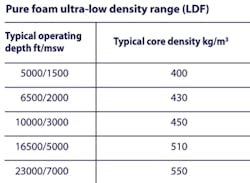Newbuild vessel fleet designed for all-round, subsea construction tasks
Nick Terdre - Contributing Editor
Aker Solutions’ pioneering decision to assemble a fleet of deepwater subsea construction and well intervention vessels is paying off. Work has already been secured for three of the four new vessels, two of which have so far been delivered.
First into action wasSkandi Santos, a deepwater subsea construction vessel, which early this year went directly into a long-term contract with Petrobras. It is currently installing subsea trees on fields in the Campos basin.
According to Johan Reenskaug, vice president for projects in Aker Solutions’ oilfield services division, each tree installation is saving six days compared with the time taken by a drilling rig to do the task. This frees up the rig 10 days early to start drilling the next well. The day rate for the vessel is also significantly less than for the drilling rig, so Petrobras is saving money as well as time.
Multi-tasking capability
Aker’s thinking with this new fleet was to transfer most of the supplementary tasks traditionally performed by drilling rigs to lighter purpose-built vessels. These would provide cheaper hire rates and do the work more efficiently, as this is what they have been designed for, Reenskaug points out. For the same reason, he adds, they provide a safer working environment.
TheSkandi Aker, Aker Wayfarer, and Aker Connector are somewhat bigger vessels than Skandi Santos. Skandi Aker, which was delivered in January, has a capability that extends to well interventions, including well testing and clean-up. It departed Stavanger in May for Ghana, where it is contracted for six months installing suction anchors on the Jubilee field development.
Aker Solutions’ deepwater intervention vesselSkandi Aker undergoing sea trials in May.
Aker Connector has been chartered for two years from 2012, with options for a further three years, to perform cable-lay for ABB. One of its assignments will be to lay the power cable for Eni’s Goliat development in the Norwegian Barents Sea. Aker Solutions has previous experience in installing subsea umbilicals from the Boa Sub C vessel which is operated by its subsidiary Aker Marine Contractors. Its scope of work for ABB includes project management, engineering, and offshore execution. Aker Connector will be equipped with two large carousels accommodating total capacity of 9,000 metric tons (9,921 tons) of cable or pipe, and a horizontal lay system.
Subsea production
Subsea production is another target growth market, with offshore activities continuing to move into deeper and more remote waters. Drilling day rates remain high. At the same time, subsea well maintenance services are in short supply. Recovery from subsea wells, typically averaging around 25%, lags well behind the 40% or so achieved from platform wells which benefit from more regular maintenance.
Other offshore contractors have increased their range of subsea well intervention services, but these are still in the main limited to lighter forms of intervention and, shallower water depths. Aker Solutions’ fleet is designed to operate in water depths down to 3,000 m (9,842 ft).Skandi Aker and Aker Wayfarer are the first intervention vessels to be classified mobile offshore drilling units (MODUs), and thereby able to take oil on board.
Vessel capabilities
These vessels, both equipped with a 450-mt (496-t) active heave-compensated drawworks and 42-m (138-ft) derrick, can each perform through-tubing drilling with coil and downhole motor; through-tubing rotary drilling with slim-pipe; and managed-pressure drilling. They can also perform well testing and clean-up operations, with flaring of produced hydrocarbons via a flare stack at the stern.
Each vessel can also carry out both riserless well operations, including logging, reperforation, and zonal isolation through plug-setting and removal; and riser-based intervention, including coiled tubing and wireline operations, high-pressure pumping, chemical injection, circulation, sand removal, and scale milling.
The vessels are additionally equipped for installation, testing, and maintenance of subsea modules and top-section downhole equipment. Each has a 400-t crane with active heave compensation, allowing them to install structures weighing up to 225 t in waters down to 3,000 m. A skidding system enables modules to be moved quickly and safely from the deck to the moonpool.
Additional vessel features
Other features include a DP-3 dynamic positioning system for station-keeping, two work-class ROVs, a deck area of 2,210 sq m (23,788 sq ft), accommodation for 140, and a transit speed of 18 knots to facilitate rapid transfers between locations.
The riser package forSkandi Aker is under manufacture at Aker Solutions’ subsea equipment plant at Tranby outside Oslo. It will be fitted and tested this winter when the vessel returns from Ghana. Aker Wayfarer, due to be delivered in October, will initially be fitted out for construction work. Some 18 months’ lead time will be required to equip it with the well intervention package.
Intervention fleet
The subsea intervention fleet is run by Aker Oilfield Services, which was established in 2006 with the brief of providing increased oil recovery services for subsea wells. Initially the company was part-owned by offshore ship operator DOF, but Aker Solutions took complete ownership last year. DOF is a partner in some of the activities – it ownsSkandi Santos and Skandi Aker, both of which are on long-term charter to Aker Solutions, and provides the marine crews for both vessels. Aker Wayfarer and Aker Connector are owned by the Aker group.
Offshore Articles Archives
View Oil and Gas Articles on PennEnergy.com

